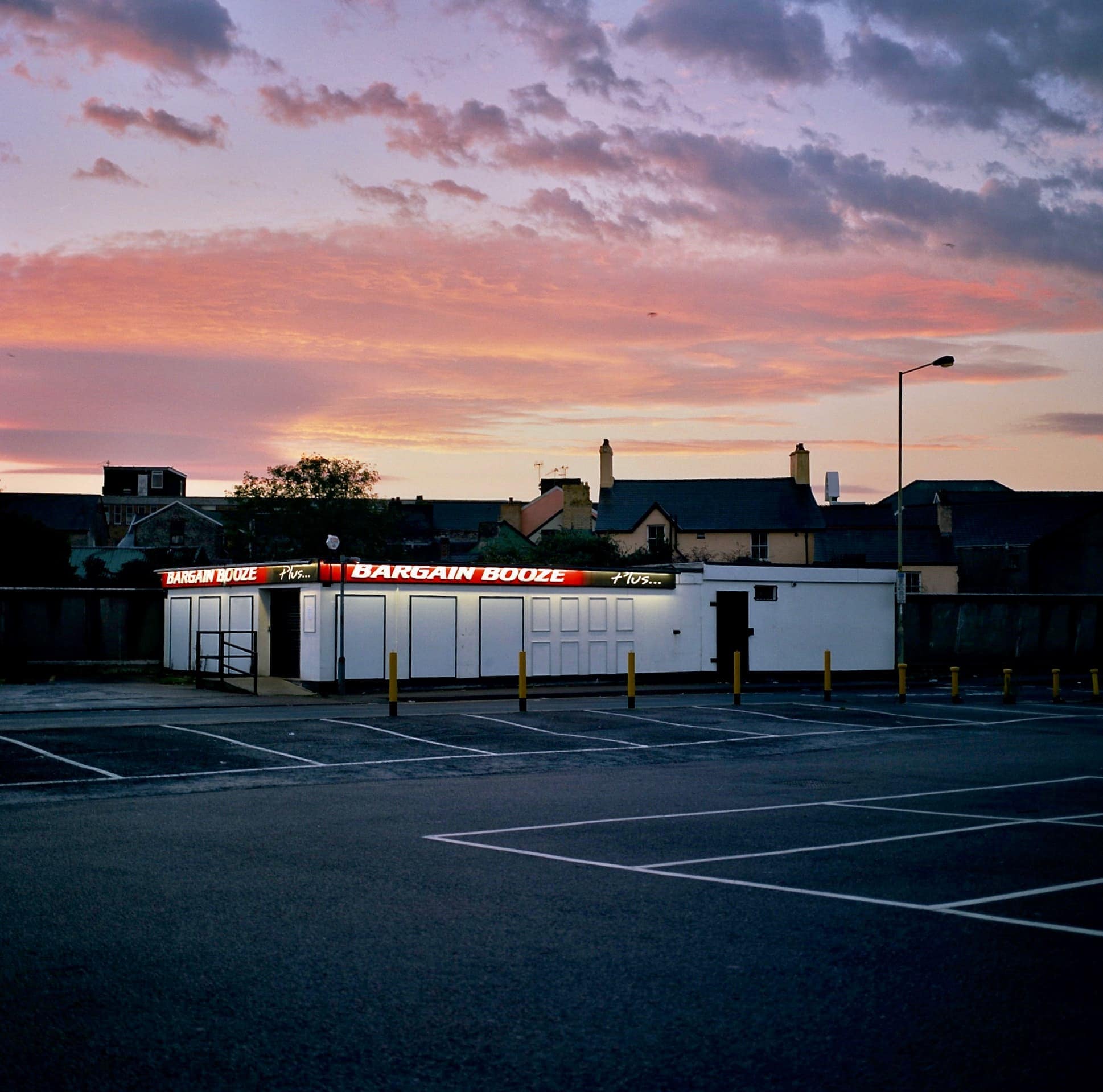
Dan, tell us about your Suicide Machine project and how the idea originated…
The project was a response to a comment I received from a check-in lady at Gatwick Airport. After looking at my passport, she said: ‘Bridgend, isn’t that where all the suicides are?’ It was then I realised my hometown was now synonymous with suicide. The series began as something very different. The initial narrative was going to focus on the Bridgend skate scene and how ‘skateboarding saves’.
I’ve been a skateboarder for over 30 years and know that skateboarding really does open your eyes to the world, and from that, a natural interest and appreciation of culture develops. I really wanted to convey this through the work, but before the project even got going my wife fell pregnant with our first child, and my mindset changed completely.
The focus then turned to our unborn child and the challenges she would face growing up in a town that was tainted by past events. I needed to re-discover the town and see for myself what it looked like from the outside and from that, ultimately, decide whether we would stay or move away.
What impact have the Bridgend suicides had on the town and its inhabitants?
At the time, there was a lot of confusion and the people didn’t really understand what was going on. There were rumours of cults, online bullying, suicide pacts, and even some other dark theories that were shrugged off as mere conspiracy. The truth of the matter is that the media decided to jump on the story and sensationalise everything.
Bridgend was portrayed as a very small town in rural Wales but in reality, it’s a county borough of 180,000 people and only 20 minutes from the capital, Cardiff. Some of the suicides were almost 15 miles apart! There’s no denying that there was a considerable number of suicides in the borough of Bridgend in a relatively short amount of time, but there was no conclusion and the whole thing has been pretty much forgotten about and swept under the carpet by the people of Bridgend.
Are you able to select one or two photos from the series and tell us the story behind them?
During the series, I wanted to focus on things that were symbolic of the loss of community – something I feel is being lost in Britain in general. The Bargain Booze photo is an example of this. It lies on the site of the old cinema, which was immensely popular back in the day; when a new film was released everyone would be there. The Bargain Booze shop sits arrogantly on this former site in the centre of town, and appears like some sort of religious building and beacon of hope, when in reality it is the total opposite.
Another photo with similar symbolism is the house surrounded by the bulbous hedge. The photo is titled ’Fortified House’ and, I feel, it represents people shutting themselves away from a world they are slightly fearful of, which I presume is down to the media constantly reporting negative news about how dangerous the world is.
The loss of community is a big concern. Community spaces are constantly being shut down and/or re-developed, leaving people with nowhere to go to socialise with other locals. There was a time when folk in a town or village all knew each other, but nowadays even to know all of your neighbours is a rare thing.
It can be hard to approach a familiar place with a fresh perspective. What was your experience of turning your lens on a place with such a personal connection?
From 2003-2010 I travelled extensively and lost my connection with Bridgend in a way. I still had a house here and was back and forth, using it as a base. But through those years all I could really think about was where I was going next. After a two month trip to India and Nepal in 2010 (with my future wife) we knew it was time to settle down – the money had dried up and we found ourselves in a sort of limbo. We both went back into full-time employment and made plans for the future.
It was around that time I decided to turn my lens on Wales – using the same approach as when I would travel to other parts of the world. This resulted in the series ‘What is Welsh?’, a broad study of the Welsh and Welshness. The pictures were mainly portraits and street photography in black-and-white and this contributed immensely to my reconnection with Wales and Bridgend in particular. After that there was no stopping me; I had developed the vision of my hometown and country that I needed to be able to make work objectively, and with acquired confidence, which was an earlier issue too.
Who are the people in your images?
The people in the photos vary. Some are relatives, some are people I know well, some I know slightly and some I don’t know at all. I feel there’s a good demographic range of people, who either live in Bridgend or have lived in Bridgend but have now left. It was my inaugural step into the world of colour documentary photography, on my home patch, so I started photographing people I knew first and carried on from there.
Do you think growing up in Bridgend has had an influence on your personal aesthetic?
Absolutely. I’m also heavily influenced by the places I have been over the years. They are constantly going through my mind – especially South America, China and India. I’ve definitely learned to appreciate where I’m from though, and I think that’s extremely important for everyone. I ‘see’ everything these days and I’m almost positive that it can be attributed not only to travel, but also growing up as a skateboarder. I know every inch of this town.




